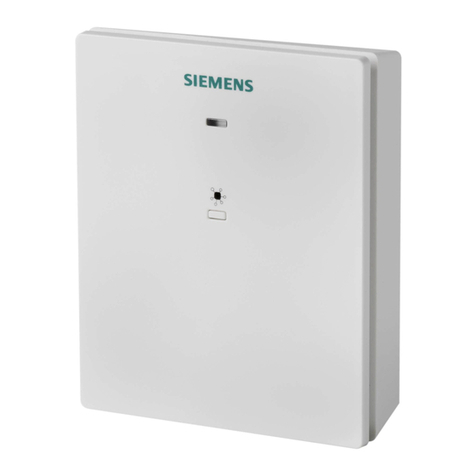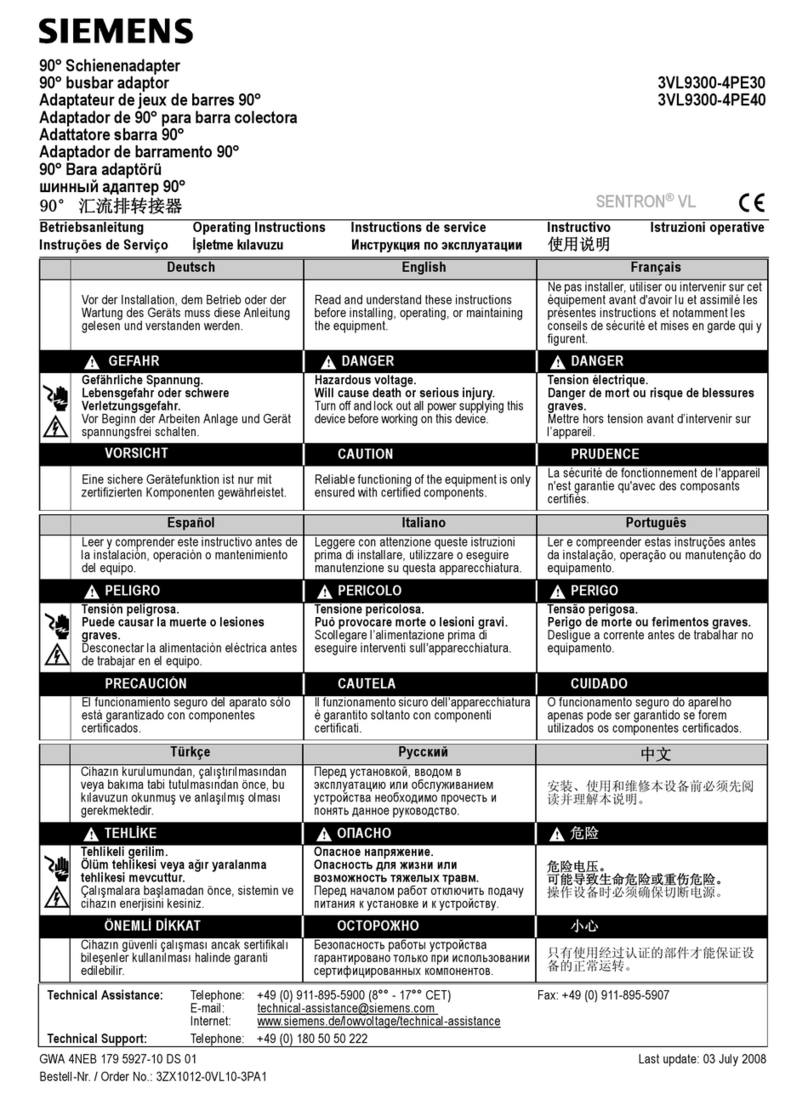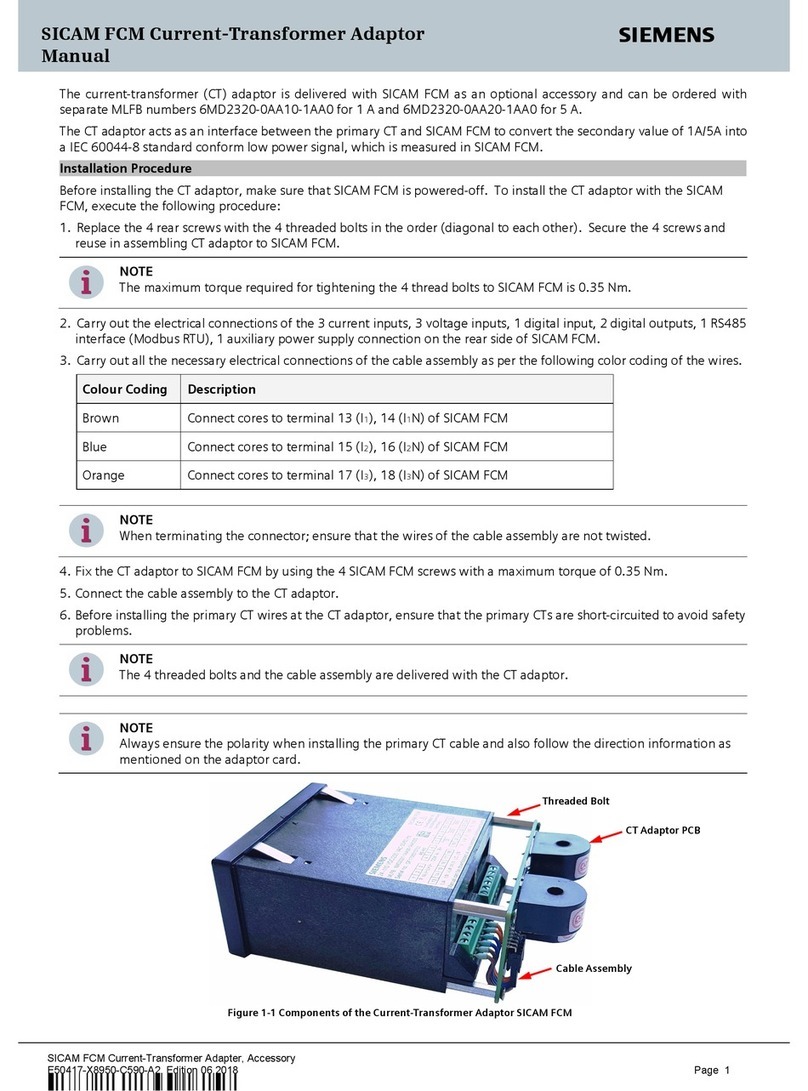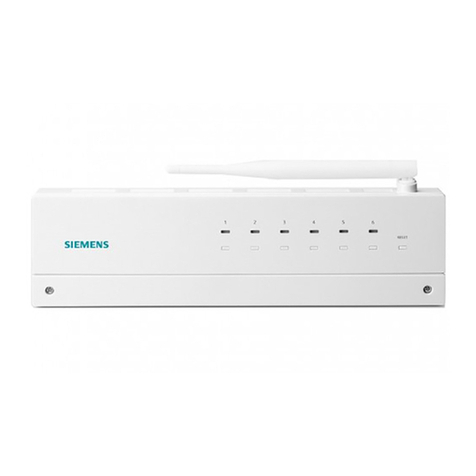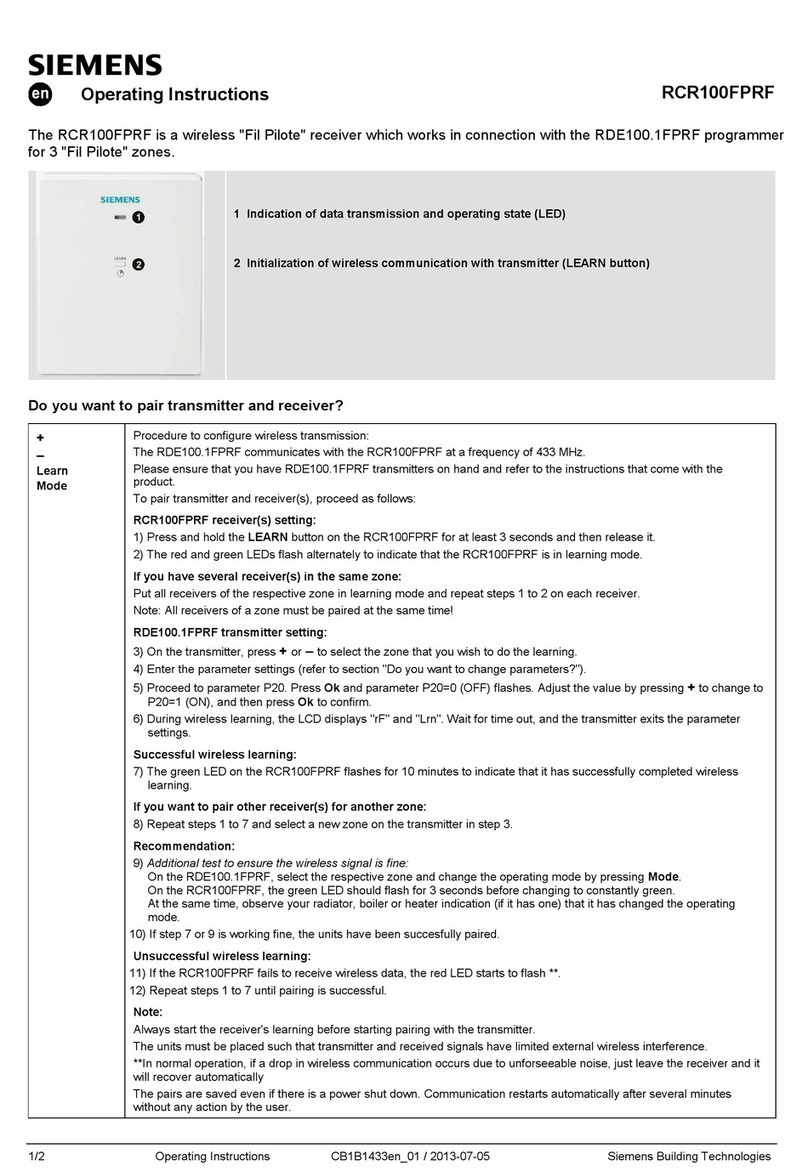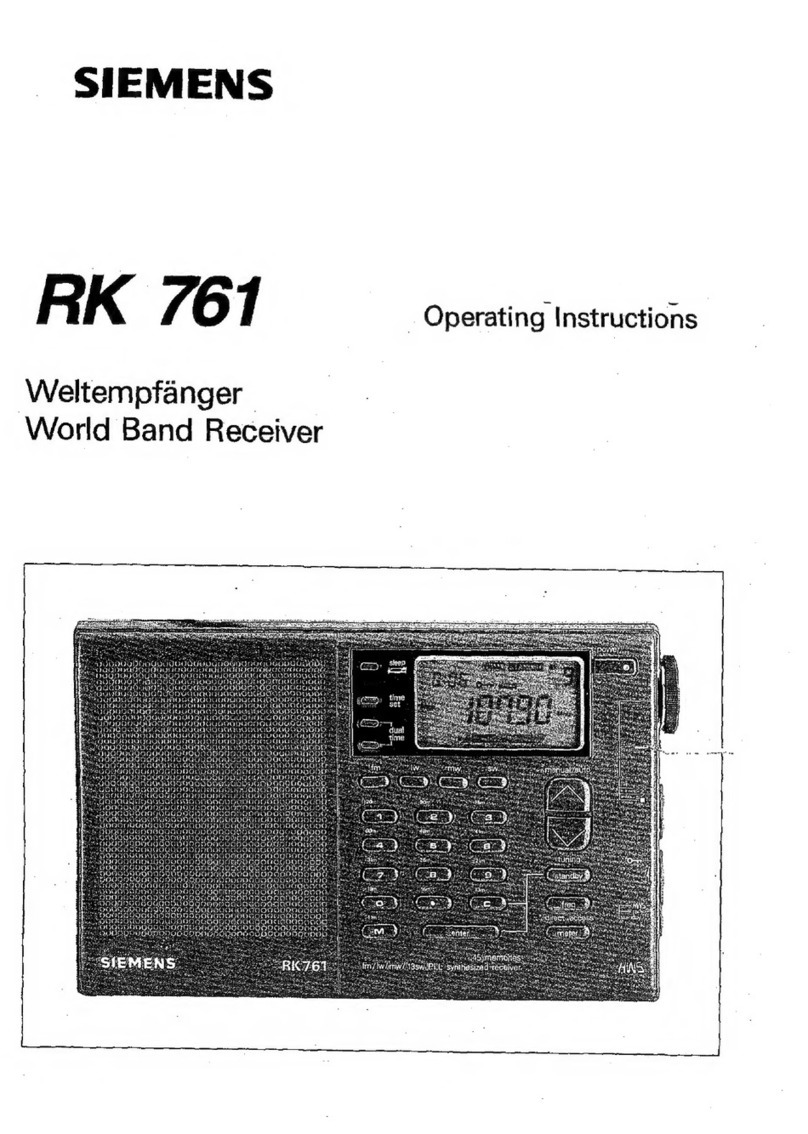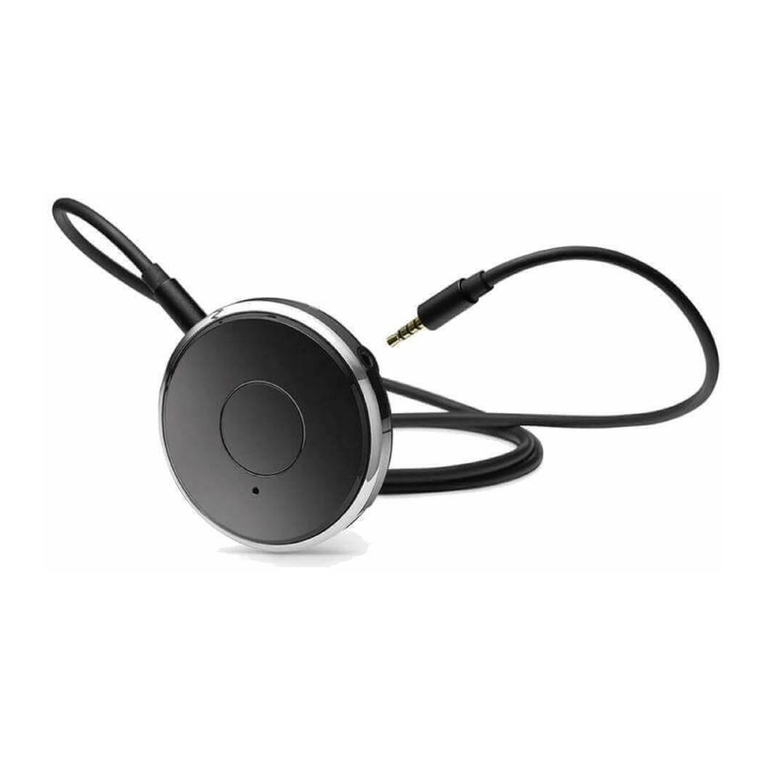
5 / 10
Siemens RXZ90.1 – Receiver with PPS2 interface CA2N1644en_05
Building Technologies 02.08.2010
Brief pressure (<1 s) on the button adjacent to the battery holder of the room unit allows
you to check the wireless link with the receiver. After receiving this signal, the receiver
will close the PPS2 interface for 1.5 s. This briefly extinguishes the display on the
connected RXT20.1 service terminal (or the green LED on the diagnostic plug, see
Diagnostics, below). If there is no wireless link with the receiver, the display on the
service terminal (or the green LED) will not be extinguished.
Pressing the button on the room unit causes the room controller to send its Neuron ID
in the same way as for registration on the LONWORKS® bus. However, when checking
the wireless communication, we are not interested in the Neuron ID, but in observing
whether the controller reacts to the wireless signal.
Additional functions for establishing communication
Sustained pressure (>5s) on the button of the room unit to be removed.
The receiver will delete only this room unit from its device list.
Caution: Wait 4 minutes before changing any further links.
Sustained pressure (>5s) on the button of the room unit to be replaced.
The receiver will delete this room unit from its device list and then switch to installation
mode.
Insert batteries in the replacement unit(s); these will switch to installation mode.
The receiver recognises all newly connected room units and adds these to its device
list.
Caution: Wait 4 minutes before changing any further links.
Sustained pressure (>5s) on the button of one of the existing room units.
The receiver will delete this room unit from its device list and then switch to installation
mode.
Insert the batteries in all the additional devices to be installed (or remove insulating
strip); the devices will switch to installation mode.
The receiver recognises all newly connected room units and adds these to its device
list.
The room unit on which the button has been pressed, is deleted from the device list and
therefore has to be reconnected. To bring it off load and set it to installation mode,
remove the batteries for at least 30s.
Caution: Wait 4 minutes before changing any further links.
For this purpose you need a special diagnostic plug (see Diagnostics, below). Insert it
and press the button on the plug for >5s. This will delete the entire device list from the
receiver and then bring it to the "Normal mode" with an empty device list.
To re-commission it, shortly bring the receiver off-load.
Then follow the procedure under Establishing communication for the first time.
Checking the wireless
communication
Remark for RXC
Cancelling the link with
a room unit
Replacing room units
(replacement units)
Connecting additional
room units to an
existing receiver
Deleting all links with a
receiver
.
.
